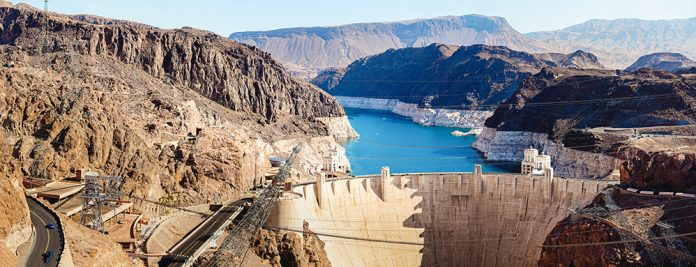
There is a connection between water resources, farmers who know the land and the consumer who trusts in our safe, domestic food supply. But that connection is at risk from the threat of lopsided policy, and once grocery store shelves are empty, it will be too late.
There is also a connection between what happens at the regulatory level on one major source of irrigation water, such as the Colorado River, and other rivers and tributaries that feed irrigation water to farms in the Central Valley.
Cuts, Consequences
In June, the commissioner of the Bureau of Reclamation, Camille Calimlin Touton, testified to the Senate Committee on Energy and Natural Resources that water users on the Colorado River would have to voluntarily decrease their usage by two to four million acre-feet in 2023 or face mandatory cuts. If water users were unable to adopt a voluntary plan by mid-August, the Bureau of Reclamation would act unilaterally and cut supplies to both junior and senior water rights holders (a voluntary water reduction plan had not yet been adopted as of this press deadline.)
The Bureau of Reclamation is ordering these cuts as part of an effort to protect dwindling water supplies in Lake Mead as a result of two decades of drought and to protect power generation at Hoover Dam.
Ripple effects from policies like this also impact the urban populations of Southern California but also might trickle down to policies for other irrigation sources.. The Imperial Irrigation District has been engaging in enormous water conservation efforts for almost 20 years, providing millions of Californians nearly 500,000 acre-feet per year of conserved water, which supports water supply reliability in Los Angeles, San Diego and other parts of Southern California.
These existing programs would be jeopardized if the long-standing legal framework of the priority system, collectively known as the “Law of the River”, consisting of numerous compacts, federal laws, court decisions and decrees, contracts and regulatory guidelines, is bypassed by the Bureau of Reclamation. The public will see increased costs, reduced inventories or even bare shelves at grocery stores.
These actions will also result in an even larger environmental and public health crisis at the Salton Sea. Drastic water cuts would expose thousands more acres of bare soil to the surrounding disadvantaged communities. Winds blow the dust throughout the region, affecting air quality for these communities.
The Colorado River serves seven Western states (Arizona, California, Colorado, Nevada, New Mexico, Utah and Wyoming), and large reservoirs were built to provide water supplies and generate power for millions of people across the Southwest. However, the Colorado is in the grips of a two-decade drought, which has strained the water supply that flows to our communities and grows our food.
California’s Imperial Irrigation District is the largest Colorado River user and holds senior water rights along with other agricultural districts, such as the Palo Verde Irrigation District and Coachella Valley Water District, which are used to grow much of the country’s winter vegetables, fruits and alfalfa.
Alfalfa is critical to the region’s dairy and beef cattle producers and feeds the cows that produce cheese, milk, ice cream and other products that make the foods so many of us love, such as pizza and hamburgers. These and many other products start with water, and there’s no better place to grow them than in an area with almost endless sunshine.
These farms are also the economic foundation for rural communities that have no other employment options when the fields dry up. Lopsided water cuts to meet the Bureau of Reclamation’s demands would not only impact our food supply, but they would also devastate the communities built around agricultural businesses, particularly in the Imperial Valley, which has no other water source and would be left to wither away.
Federal Funding Can Help
We can avoid this scenario if the Bureau of Reclamation’s cuts adhere to existing laws, are spread throughout the river’s seven basin states and include a plan to offset water supply losses and the associated community impacts at the local level. We must, to the greatest degree possible, protect the future production of California farm products and viability of rural communities and avoid years of litigation that aren’t conducive to solving the problems on the Colorado River.
A balanced approach on the Colorado can help meet the goals of reduced water demands and protect the food, water supply, jobs and power generation that millions of Americans depend on.
At the time this article was submitted for publication, legislation had passed the Senate and was awaiting action by the House that would allocate $4 billion to help farms reliant on the Colorado River weather this crisis.










